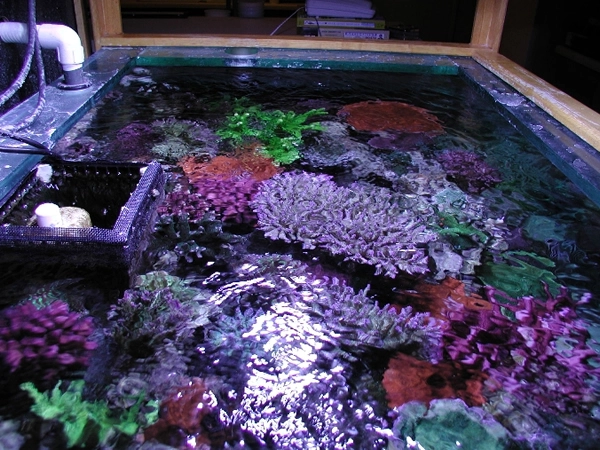Stunning 200-Gallon Reef Tank by Tracy Gray | ReefKeeping

Tank Specifications
Volume: 200 Gallons / 757 Liters
Dimensions (L × W × H):
60.0" ×
36.0" ×
24.0"
152.4cm ×
91.4cm ×
61.0cm
Equipment List
- Salt: Seachem
Frequently Asked Questions
How do I maintain the water quality in my reef tank?
To maintain water quality in your reef tank, perform weekly water changes, aiming for about 15 gallons exchanged each week. Use high-quality water sources, such as RO/DI water, and regularly monitor your water parameters, especially salinity, temperature, and alkalinity. Ensure nitrates and phosphates remain undetectable with regular testing.
What type of filtration system do I need for a reef tank?
For a reef tank, a combination of mechanical and biological filtration is effective. Use a homemade skimmer for mechanical filtration, and implement a deep sand bed, live rock, and a refugium for biological filtration. A healthy balance of these systems will help maintain water clarity and remove organic waste.
What lighting setup is optimal for coral growth in a reef tank?
An effective lighting setup for coral growth includes using a mix of metal halide bulbs, such as four 175 watt 10,000K bulbs for white light and two 400 watt 20,000K bulbs for blue tones. The placement of the bulbs is crucial; positioning them to cover the entire tank will enhance coral growth and coloration.
How do I adjust the lighting for different coral types?
To adjust lighting for different coral types, place high-light requiring corals like Acropora closer to the surface where the light is most intense, while low-light corals should be positioned further down or along the tank's perimeter. Monitor the response of your corals to lighting and adjust their positions if you observe signs of stress or poor health.
What types of fish and invertebrates can I keep together?
A moderate to slightly heavy fish load can be effective in a reef tank. Suitable combinations include tangs, pygmy angels, and a variety of blennies and basslets. When choosing invertebrates, consider species like brittle stars, clean-up crew members (hermits and snails), and be cautious of potential pests—like Montipora-eating nudibranchs—by quarantining new arrivals.
How can I manage pest species in my reef tank?
To manage pest species, regularly inspect your corals and livestock for signs of unwanted pests like nudibranchs or flatworms. Quarantine new additions to prevent introducing pests. Manual removal, wrasse as natural predators, or dedicated treatments can help control pest populations effectively.
How often should I feed my reef tank inhabitants?
Feed your fish and invertebrates twice daily using high-quality flake food or pellets. Automatic feeders can help ensure consistent feeding without overfeeding. Provide occasional treats such as frozen foods or algae sheets for tangs and other herbivores.
What supplements should I add to a reef tank?
Consider using calcium and alkalinity supplements to support coral growth. A calcium reactor helps maintain these parameters efficiently. Additionally, products like SeaChem Reef Plus can be added sporadically to provide vitamins and amino acids, though their effectiveness can vary based on tank conditions.